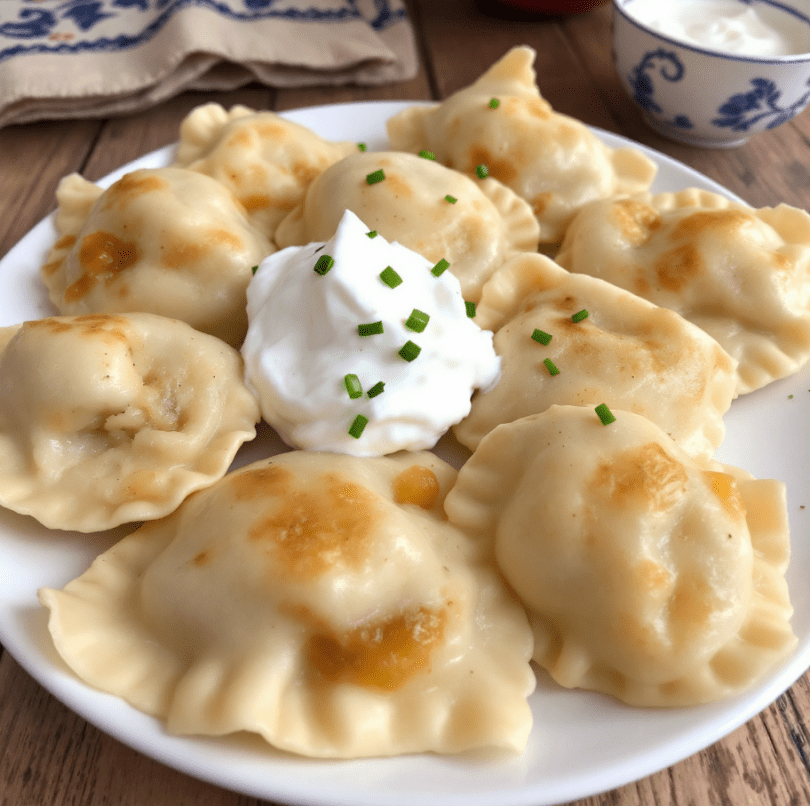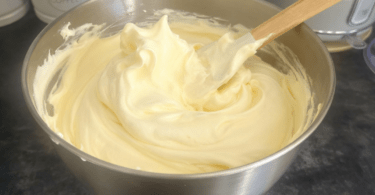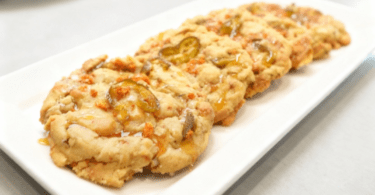How to Make Pierogi at Home
Introduction
Pierogi are delicious dumplings that have their roots in Eastern European cuisine, particularly in Russia, Poland, and Ukraine. These delightful pockets of dough can be filled with a variety of ingredients, from savory potatoes and cheese to sweet fruits. Making pierogi at home is not only a rewarding experience but also a great way to connect with these rich culinary traditions.
The Story of Pierogi: A Culinary Journey Through Time
In the heart of Eastern Europe, where the rolling hills meet the vast plains, a culinary treasure was born: pierogi. This beloved dish, often described as dumplings, has a rich history that intertwines with the cultures of Poland, Ukraine, and Russia, each adding its unique twist to the recipe.
The Origins: A Culinary Invention
The origins of pierogi can be traced back to the 13th century, although some historians argue that similar dumplings may have existed even earlier. The word “pierogi” itself is derived from the Slavic word “pir,” which means “feast” or “celebration.” It is believed that these dumplings were initially created as a way to celebrate special occasions, such as harvest festivals and family gatherings.
The earliest pierogi were simple, made from unleavened dough filled with whatever ingredients were available. Farmers and their families would fill the dough with potatoes, cheese, or seasonal vegetables, creating a hearty meal that could sustain them through long days of labor. As trade routes expanded and cultural exchanges flourished, the fillings evolved, incorporating meats, fruits, and spices from various regions.
The Polish Influence
By the 16th century, pierogi had become a staple in Polish cuisine. The Polish nobility embraced the dish, elevating it to a symbol of culinary sophistication. Recipes began to appear in cookbooks, and pierogi were served at grand feasts, often filled with luxurious ingredients like mushrooms, cabbage, and even game meats.
In Poland, pierogi became associated with specific holidays and traditions. For instance, during Christmas Eve, families would prepare a special type of pierogi filled with sauerkraut and mushrooms, symbolizing the end of the harvest season and the beginning of a new year. This tradition continues today, with many Polish families gathering to make pierogi together, passing down recipes and stories from generation to generation.
Ukrainian and Russian Variations
As pierogi spread across Eastern Europe, each culture adapted the recipe to reflect its culinary preferences. In Ukraine, for example, pierogi are known as “varenyky.” Ukrainian variations often feature fillings like potatoes, cheese, and cherries, showcasing the region’s agricultural bounty. Varenyky are often served with a dollop of sour cream and a sprinkle of fresh herbs, enhancing their flavor and richness.
In Russia, the dumplings are called “pelmeni,” which are typically filled with minced meat and seasoned with spices. Unlike pierogi, which are often boiled and then sautéed, pelmeni are usually boiled and served in broth, making them a comforting dish during the cold winter months.
The Modern Era: A Global Favorite
In the 20th century, as Eastern European immigrants spread across the globe, they brought their culinary traditions with them. Pierogi found a new home in the United States, particularly in cities with large Polish and Ukrainian communities. Festivals celebrating pierogi became popular, and the dish gained recognition beyond its cultural roots.
Today, pierogi are enjoyed worldwide, with countless variations reflecting local ingredients and tastes. From sweet fillings like blueberries and strawberries to savory options like spinach and feta, the versatility of pierogi has made them a beloved dish for many.
A Culinary Tradition Continues
The story of pierogi is not just about a dish; it is about family, tradition, and the joy of sharing a meal. Making pierogi is often a communal activity, where families gather to roll out dough, fill it with love, and create memories that last a lifetime. Each bite of pierogi carries with it the history of generations, a testament to the resilience and creativity of those who came before.
As you savor a plate of homemade pierogi, whether filled with potatoes and cheese or sweet fruits, remember that you are part of a rich tapestry of culinary history that spans centuries and continents. The humble pierogi, with its simple ingredients and heartfelt preparation, continues to bring people together, celebrating the flavors of the past while embracing the creativity of the present.
Why You’ll Love Making Pierogi at Home
Making pierogi at home allows you to customize the fillings to your liking, ensuring that every bite is tailored to your taste. Plus, the process of making them can be a fun activity to share with family and friends. With low competition for homemade pierogi recipes, you can easily stand out with your unique twist on this classic dish.
What You’ll Need
- For the Dough:
- 2 cups all-purpose flour
- 1 large egg
- 1/2 cup water
- 1/2 teaspoon salt
- For the Filling (Potato and Cheese):
- 2 cups mashed potatoes
- 1 cup cottage cheese or farmer’s cheese
- 1/2 cup shredded cheddar cheese
- Salt and pepper to taste
- Tools:
- Rolling pin
- Round cutter or glass
- Pot for boiling
- Skillet for frying
Method in Brief
To make pierogi, start by preparing the dough and letting it rest. Roll it out and cut into circles. Fill each circle with your desired filling, fold, and seal. Boil the pierogi until they float, then sauté in butter for a crispy finish.
Tips
- Make sure to seal the edges of the pierogi well to prevent the filling from leaking out during cooking.
- Use a little flour on your work surface to prevent sticking.
- Experiment with different fillings to find your favorite combination.
Variations
While potato and cheese are classic fillings, you can also try:
- Meat fillings (ground beef)
- Sauerkraut and mushroom
- Sweet fillings (cherries, blueberries, or sweet cheese)
Storage
Uncooked pierogi can be frozen for up to three months. To store, place them in a single layer on a baking sheet until frozen, then transfer to a freezer bag. Cooked pierogi can be stored in the refrigerator for up to five days.
How to Make Pierogi at Home
Ingredients
- 2 cups all-purpose flour
- 1 large egg
- 1/2 cup water
- 1/2 teaspoon salt
- 2 cups mashed potatoes
- 1 cup cottage cheese
- 1/2 cup shredded cheddar cheese
- Salt and pepper to taste
Directions
- In a bowl, mix flour and salt. Make a well in the center and add the egg and water. Mix until a dough forms.
- Knead the dough on a floured surface until smooth. Cover and let rest for 30 minutes.
- In another bowl, combine mashed potatoes, cottage cheese, cheddar cheese, salt, and pepper.
- Roll out the dough and cut into circles. Place a spoonful of filling in the center of each circle.
- Fold the dough over the filling and pinch to seal.
- Boil in salted water until they float, about 3-5 minutes. Drain and sauté in butter if desired.
Nutritional Info
Per serving (4 pierogi):
- Calories: 250
- Protein: 8g
- Carbohydrates: 40g
- Fat: 8g
- Sodium: 300mg
FAQ
Can I make pierogi ahead of time?
Yes! You can prepare the dough and filling in advance and assemble them when you’re ready to cook.
What is the best way to reheat pierogi?
The best way to reheat pierogi is to sauté them in a skillet with a little butter until heated through.
Conclusion
Making pierogi at home is a delightful culinary adventure that brings the flavors of Eastern Europe to your kitchen. With a little practice, you’ll be able to create these delicious dumplings that are sure to impress your family and friends. So gather your ingredients and start making your own pierogi today!








